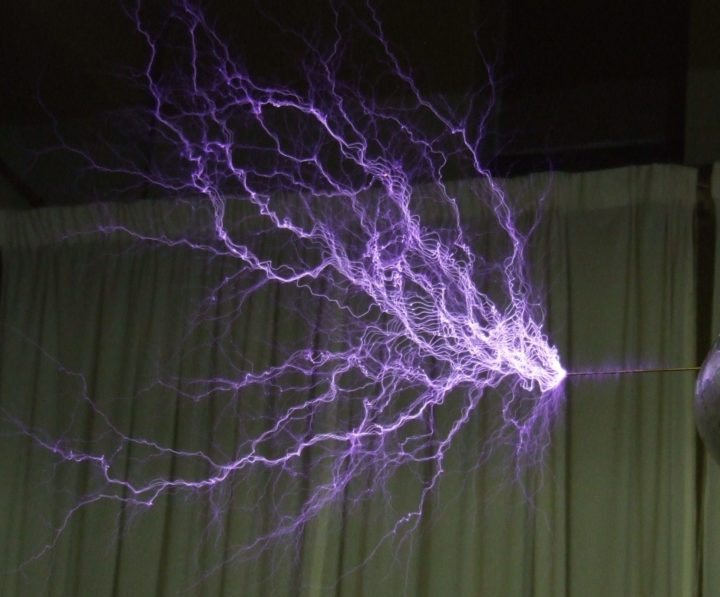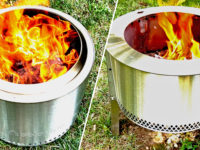The following contribution is from another author.
Back at the start of the nineteenth century, there were no cords. Almost every household appliance that a person owned was portable, able to perform chores without tangling the operator in a web of annoying wires. But with the advent of electrification, that all changed. Yes, we got powerful tools that made domestic living much more comfortable, but they came at a cost in terms of portability and usability. It became harder to move things around and use them as we pleased. We were living in a web of wires.
Of course, at the start of the nineteenth century, there were no toasters, kettles, vacuums, or dehumidifiers: all of those things became possible thanks to the ability to deliver electricity directly to devices. But there’s no denying that many people yearn for a simpler time, one in which they can do what feels natural and use their devices on the go, wherever they happen to be.
It must be said that we’ve adapted rather well to the cord. With sockets, adapters and plugs, we’ve arranged our homes around the need to access energy supplies at a particular location. But just because that’s how something has been done in the past, doesn’t mean that that’s the way it should continue to be done in the future, far from it.
The Rise Of Battery Technology
The major change we’ve seen in recent years has been an improvement in portable energy technologies. Not only has the price of batteries come down substantially, but we also see a steady increase in the energy density of cells, year after year. Lithium-ion batteries have come a long way since the 1990s when they were first introduced commercially by Sony. The technology has proven vital in the development of practically every portable electronic device, powering our mobile world. Even now, many years into the Li-ion revolution, companies continue to add capacity, increasing the amount of energy that can be contained in a given volume cell by 5 to 7 per cent per year. Combined with a price decline of around 7 per cent per year, and the effects soon add up. Batteries are becoming better and cheaper at the same time, opening up a host of opportunities to change how we do tasks in the home.
It should be pointed out that batteries have now reached the point where they are viable for powering even the most energy-intensive home devices. A cordless vacuum, for example, can require up to a 1000W in power for effective operation, something that today’s modern batteries can sustain. Although not practical from a design perspective right now (because of the volume of cells), it’s not inconceivable for the kettles and hair dryers of the future to be battery powered.
The Fall Of Wired Electricity
At this point, you may be a little skeptical of the argument so far. Sure, you might argue, batteries are getting better, but that doesn’t eliminate the need for cords. Even thirty years into the cell phone revolution, you still have to plug the thing into a wall socket at night to charge it up. So the genuinely cordless home is a pipe dream. There’s no way to eliminate annoying wires.
But, of course, that’s not the case. Nicola Tesla, one of the pioneers of electricity, tried to develop a method of distributing power to people through the air. His system ultimately failed, but the concept proved instructive to later scientists and engineers trying to work out whether it was possible to send power without the use of wires. Wouldn’t that be amazing?
The main problem is finding a way of turning electricity into something that’s safe to send through the air. Simply forcing electrons to jump from one conductive material to another, like lightning, is not a great solution. It’s dangerous, loud and impractical in most homes, especially those that contain any form of life. The task is to create a safe way of sending electrons through the air without the risk of electrocution.
Although there are several methods of doing this, the most suitable for homes is the use of power pads. Power pads don’t send electricity over long distances, but they can theoretically remove the need for wires in the home. You can imagine, for instance, a cordless vacuum having a station in the laundry cupboard – a small mat – that automatically charges the device until its fully charged. Likewise, a power mat built into a countertop could provide all the energy that kitchen devices, like blenders, need, without the need to go through the annoying rigmarole of hooking up cords.
The trick to mass adoption of the technology, according to industry experts, is making the power pads device agnostic. Homeowners don’t want to have to put the kettle in one place and the blender in another for smooth operation. What they want is to be able to put their appliances anywhere on their work surfaces and for them to operate flawlessly. The problem, at present, is that each power pad has to be tuned to the specific requirements of the device. Harmonization across industries could help to solve this problem, but it will be a mammoth undertaking.
The main draws of the technology, though, are safety and convenience. Power pads eliminate the need for dangerous electrical outlets, which will be especially helpful in countries that still use two-pin plug designs. Worries around electrical safety should become a thing of the past, as devices charge remotely through power pads and then use onboard batteries to supply instant, high power to the user.
The final iteration of this technology will involve the use of magnetic fields. MIT is currently researching how to manipulate magnetic fields to send energy over long distances. They call their technology, magnetically coupled resonance, and the idea is to send electricity through the air in a similar way to how radio or WiFi waves get transmitted. Devices would be tuned to a specific energy frequency and would be able to charge their onboard batteries without the use of wires at all. It is hoped that, ultimately, cells might not be needed at all and that some devices would be able to pluck the energy that they need right out of the ether.
Why Hasn’t It Happened Yet?
Many wireless transmission technologies are already available. You can go to an electronics retailer and pick up a pad charger for a compatible phone today. But we haven’t seen widespread adoption of the technology yet. Why?
There are two main reasons. The first is that the solutions that we have right now are “good enough.” It’s already convenient to plug devices into a wall as and when you need them. Changing to wireless electricity distribution yields an improvement in quality of life, but it’s not the ten-fold increase that people usually require to make an immediate change in their habits (as they did with the advent of smartphones).
And the second reason has to do with people’s expectation. The majority of consumers just aren’t aware of wireless electricity distribution technologies. The idea of ditching cords in one’s home seems like a futuristic and far-fetched idea and not something that the majority of people will be willing to try immediately.
If the technology works out how some researchers imagine, it could ultimately do away with batteries altogether. Although cells are helpful for many mobile appliances, they still cost a lot of money to manufacture, and many varieties of battery, especially lithium ion, are dangerous if damaged. Getting rid of them by powering a home with magnetically coupled resonance could provide all kinds of advantages and provoke entrepreneurs to come up with novel ideas for how to use energy in the house.
What About The Effects On Health?
The final worry in this story is the effect that wireless electricity technology might have on health. People already worry about the electromagnetic radiation cruising through the air in the form of microwaves, radio waves and EM transmissions. Will yet another type of wireless communication potentially damage people’s health?
The answer from experts is maybe: the science just hasn’t been done yet. It is possible that wireless transmission could be damaging to human health, or not at all. It’s important to point out, though, that we’re not dealing with particularly dense energy fields when we talk about cordless power. The energy that people will be exposed to will be about the same as that generated by the Earth’s magnetic field. It’s the kind of low-intensity radiation that we’ve evolved as a species to withstand, suggesting that it probably is safe – at least for upwards of 90 per cent of the population.
And it brings substantial benefits too, which is why so many people are interested in it. So could we be looking at a future without wires in the home? As always, it’s not so much a technology problem – the technology largely exists to make it happen – but more a consideration of cost, practicality and real-world benefits. Sure it would be nice to have wireless transmission throughout the home, but few people want to go to the hassle of pulling out the perfectly functional plug sockets that they already have.
















